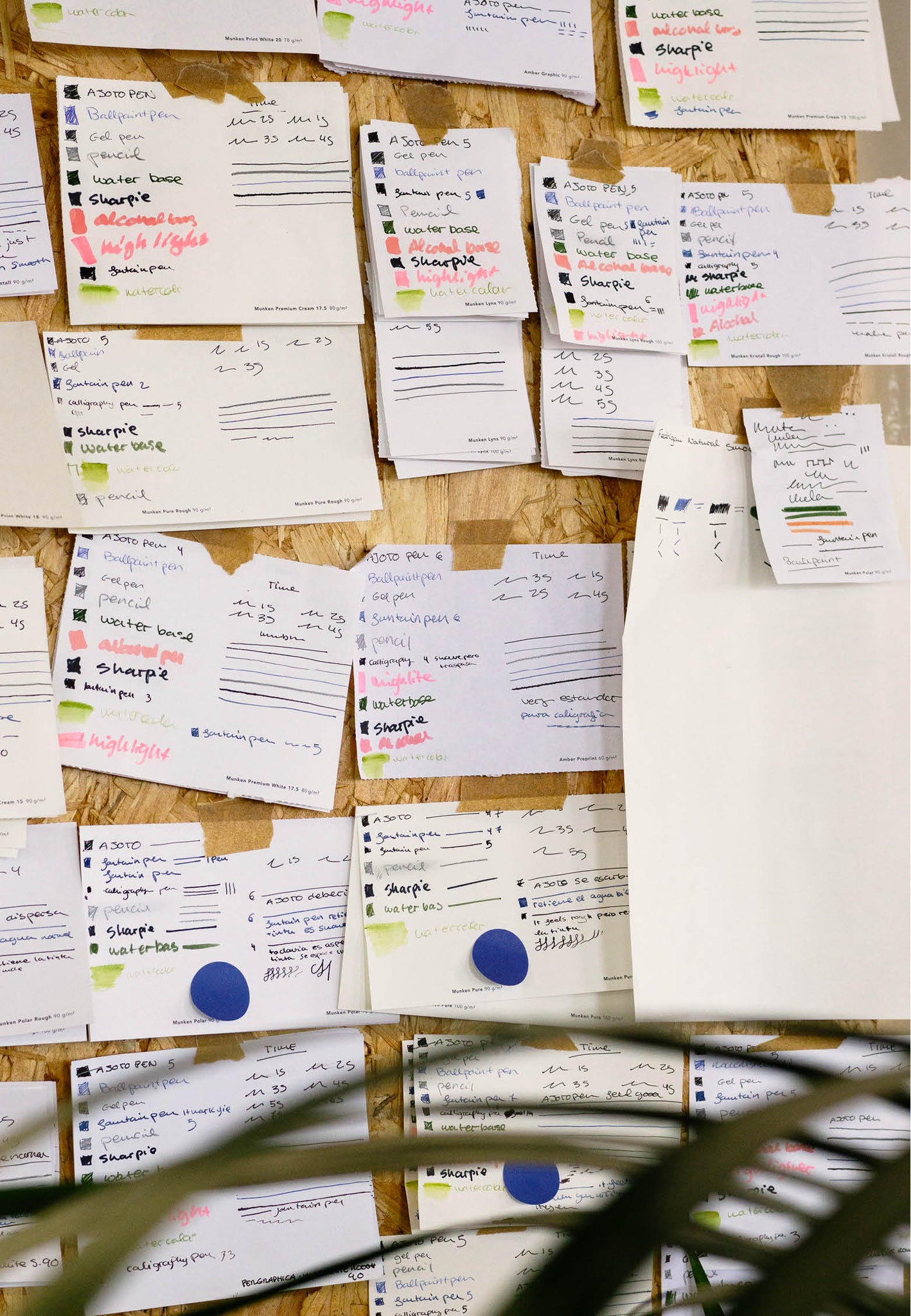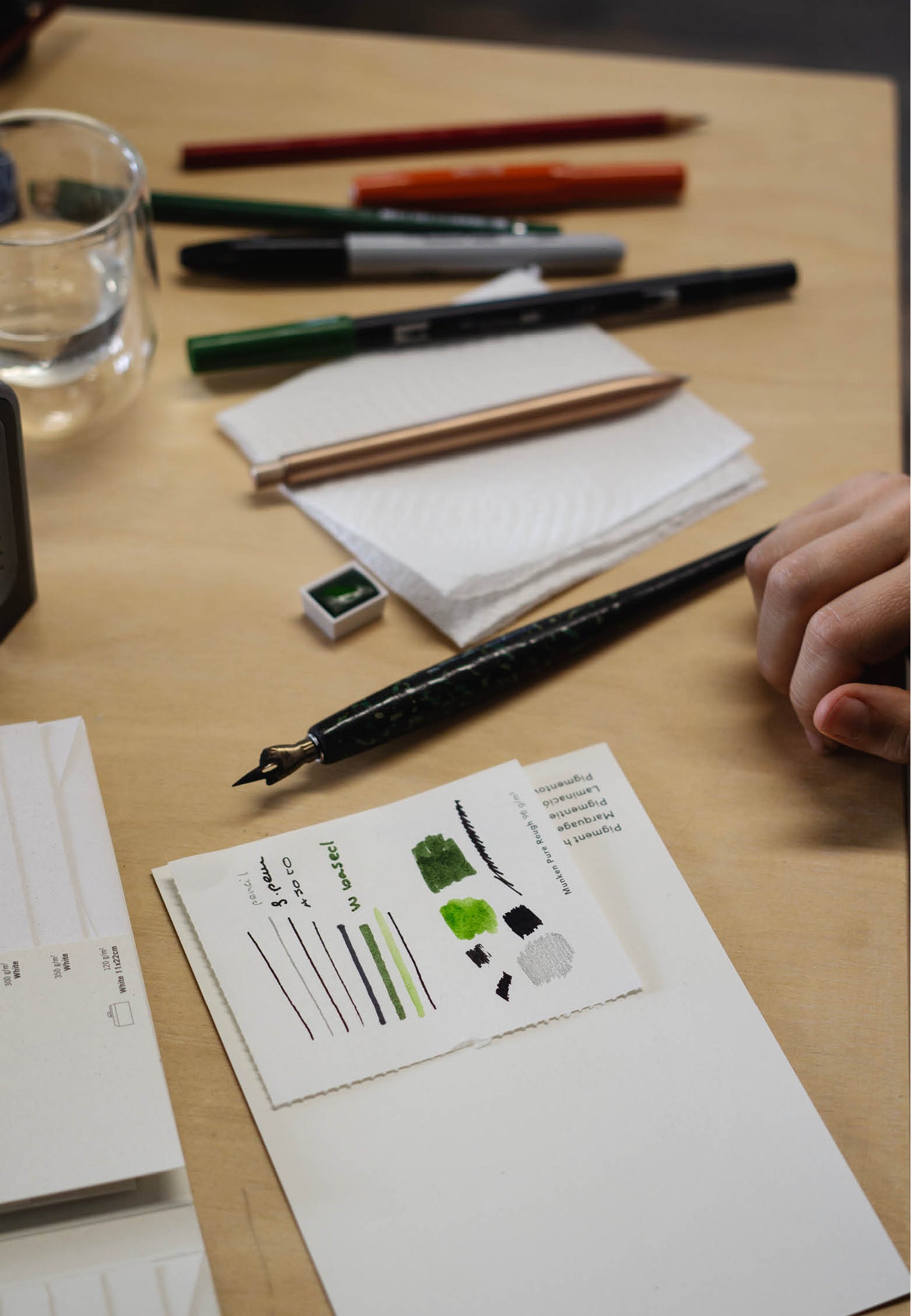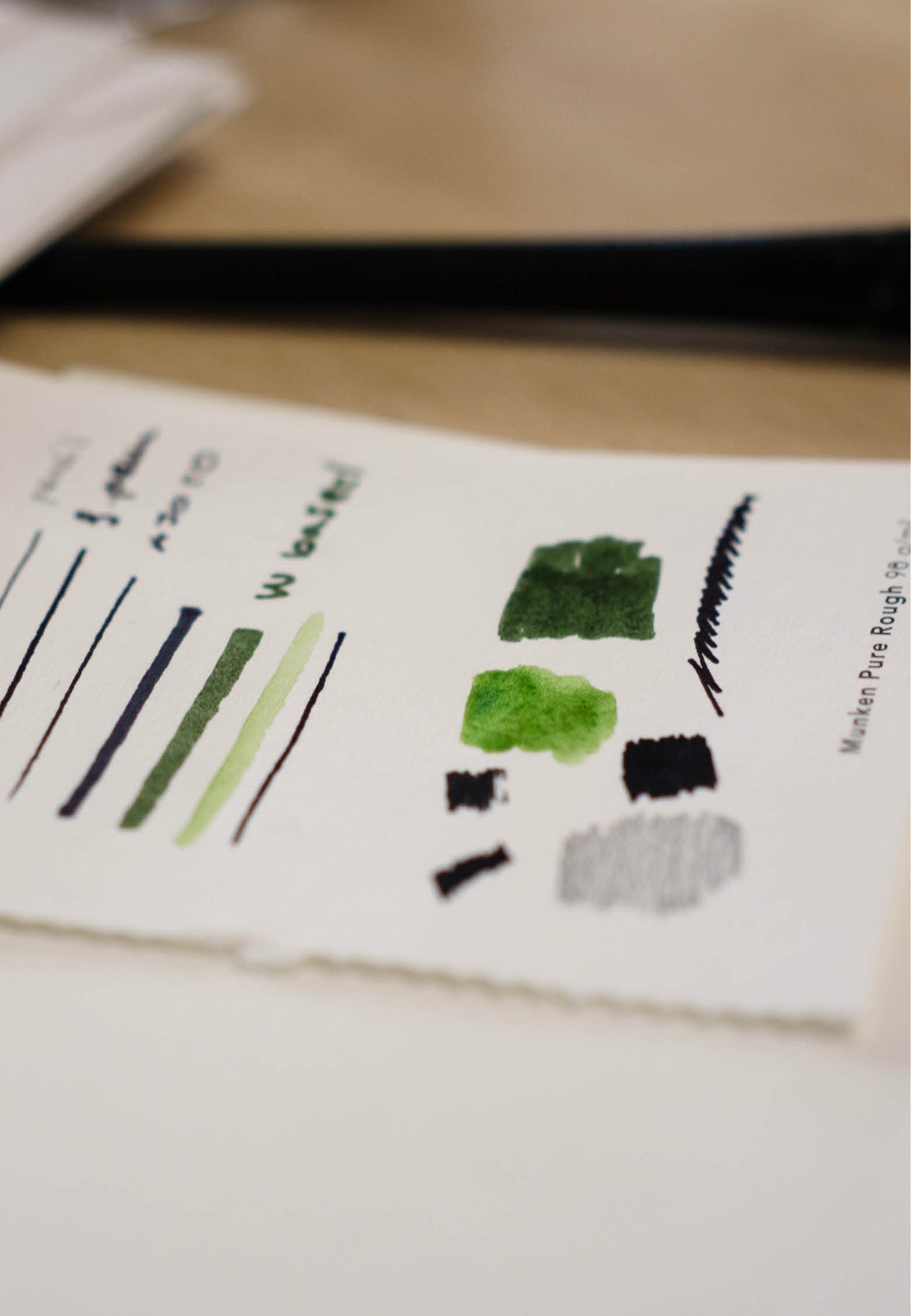Paper is a uniquely beautiful and tactile material, it’s both ubiquitous and abundant while also being scarce and precious. The options available are incredibly diverse and seem endless, however, for most of us our knowledge of paper is at best limited.
As for notebooks, bar the exception of some niche artistic products, information regarding the paper is all too often relegated to the footnotes and in many cases eclipsed by marketing stories or decorative design. This leaves us as a customer, uneducated and uninformed, forcing us to make a purchasing decision, primarily online, based on aesthetics, brand or price point rather than anything of objective substance. The irony is that the bulk of what we invest in when buying a notebook is the sheets of paper that make up the pages
When it came to creating our AJOTO notebooks we were faced with a predicament; How do we select a paper and does the perfect paper exist?
From the moment we began designing the AJOTO notebooks, it was critical that we focused on putting the paper front and centre. It was also important that the paper we selected wasn’t exclusive to our AJOTO Pen. If the notebooks were to be a celebration of paper then they needed to provide an incredible experience no matter what creative tool you used, from pencils to paints. This is the moment we began to evolve our understanding of the word ‘perfect’ not as a hierarchical quantitive term but as a subjective qualitative one.
However, this was based on our presumption that the material selection for a notebook would be relatively straightforward and we could access some kind of database. We were mistaken. As soon as we started reaching out to paper mills the scale of the task began to dawn on us. A trickle turned into a torrent as we began receiving hundreds of sample books and sheets, each parcel bursting with a spectrum of colours, textures, weights, compositions, ecological credentials and details. The volume of options quickly became overwhelming with each company using different terms or including or omitting certain comparable technical information and with no standardised reference material.
Taking inspiration from the world of food and beverages (wine, coffee, chocolate and tea) we began categorising our paper samples based on a range of criteria for the obvious such as provenance, colour and weight to the less obvious such as texture, feel and aesthetics.
A technical assessment was followed by endless physical testing as we tested how each stock responded to various writing and drawing media. To narrow down our results further we reached out to a cross-section of our AJOTO community to help us blind test a curated selection of papers. After signing up a diverse group of customers we shipped out 30 unique paper samples with only stipulation that they needed to use a broad range of their favorite creative tools and share the feedback with us. The results were fascinating. There was consensus along with conflict, some pointed out specific qualities they were looking for in great technical detail others expressed their emotional feelings and experiences.
What did we learn, does the perfect paper exist? In short yes, every single paper is perfect. Before you cry fowl, let me explain, during the process we came to realise that it was never our role to make a declaration. Our role and responsibility is that of a curator, to use our knowledge and experience of both the materials we use and the customer's needs to provide a refined selection. We use our expertise to test and narrow down the selection and provide clear information so our customers can make an informed decision. By doing we can help guide our customers closer to finding their perfect paper..






